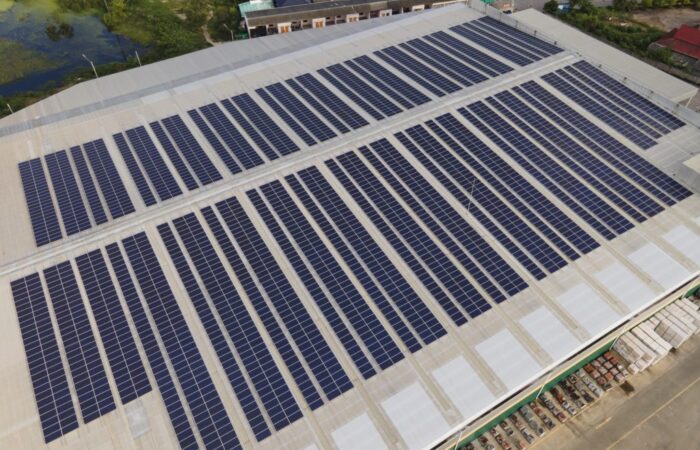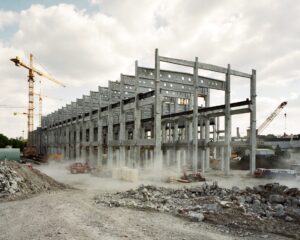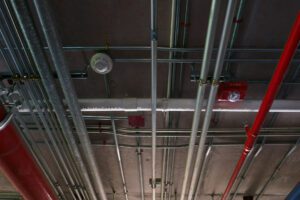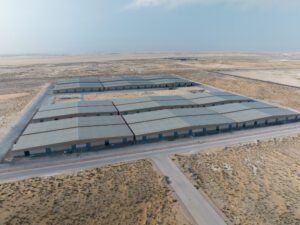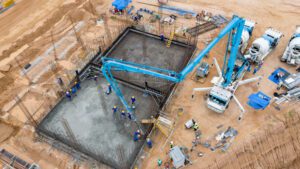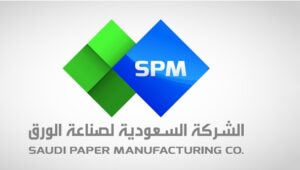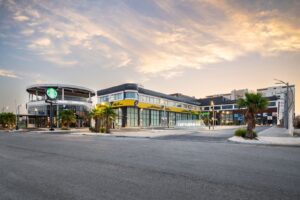Building a structure in a way that is good for the environment, does not damage the environment, and makes effective use of resources is what is meant by “eco-friendly” or “ecological” construction.
This style of construction, often known as “green building,” is energy-efficient not just in the sense that it makes use of local and renewable resources, but also in terms of the amount of energy that is necessary to create it and the amount that is produced when people are inside of it.
The realization that structures may often have a detrimental effect on the surrounding natural resources and the environment led to the development of environmentally responsible building practices.
This includes transporting materials hundreds or thousands of miles, which has a negative impact on the amount of energy required to transport them, and also in emissions of hazardous chemicals from a poorly designed building that creates, and traps, them.
This can have a negative impact on the environment.
Selection of Ecologically Constructed Structures
Those who want to design and construct an environmentally friendly home today have access to a wide variety of possibilities. Architects, engineers, and builders all over the world are currently employing construction methods that are eco-friendly.
This is done in response to local environmental concerns and the physical resource opportunities that are currently available. These methods are then combined with technological advancements that have been made in the 21st century.
These are some instances of development that have a minimal effect on the surrounding environment, which make use of and fit in with the local environment, and which could be readily disassembled and relocated if necessary.
Characteristics of Ecologically Sound Construction
In the more traditional method of building construction, the key to achieving success in an environmentally friendly manner lies not only in the utilization of straightforward and easily accessible materials but also in the manner in which technology and building materials combine to produce ecological resources.
For example, utilizing pulped recycled paper as roof insulation is a resource that is easy to use yet has a significant positive impact on the environment.
It is already common knowledge that asbestos insulation, which can be found rolled out in thousands of houses throughout the UK, is harmful to human health. In a landfill, the decomposition of asbestos may take up to a few hundred years.
Additional characteristics of an ecological building might include the following:
- The several applications of solar panels for home heating, include hot water heating
- Water conservation, which may include the treatment and reuse of wastewater via biological processes, as well as the straightforward collecting and recycling of rainfall for use in gardening,
- Lightbulbs that use less energy have a lifespan that is up to one hundred times longer than standard bulbs.
- Cellulose insulation
- Paints and wood treatments that do not contain lead or are non-toxic
- Timber that was produced and cut down in the immediate area, sourced from forests that were managed responsibly.
Benefits of Going Geen
Reducing Gases Contributing to Global Warming
Reducing pollution is a major benefit of using green building techniques. About 39% of all worldwide greenhouse gas emissions come from the building industry, including during construction and operation.
Low-greenness buildings are less valuable and more expensive to maintain.
Decreased Risk of Diseases
Reducing the number of pollutants released by homes and businesses is an effective way to lessen the risk of illness. Workers and residents in the area are at a higher risk of developing cancer, stroke, heart attack, and other diseases due to prolonged exposure to toxic air.
Asthma episodes, chest discomfort, and shortness of breath are all made more likely.
Construction firms that use green practices and emission-free products get the same advantages as their clients. To meet these needs, several companies have developed emission-reducing electric excavators.
Decreased Expenditures on Utilities
Reducing emissions of greenhouse gases via the deployment of efficiency-boosting technologies also offers monetary benefits. Builders can help homeowners save money on utilities by installing energy-efficient appliances.
Smart thermostats and other efficiency gadgets may drastically cut a building’s dependency on power generated by fossil fuels. Accessing up-to-the-minute weather forecasts is a breeze with the help of this innovative gadget, which requires a Wi-Fi connection.
A smart thermostat may reduce energy waste by adjusting interior temperatures in response to forecasted weather. They’re connected to motion detectors that record who’s in each room. When the system recognizes that a room is unoccupied, it cuts the electricity to that area automatically.
Reduce Stormwater Overflows
Protecting the world’s ecology and seafood supplies is the responsibility of the construction industry and specialists who design buildings and communities to reduce stormwater runoff play a crucial role in this
Green roofs are being used in the construction of new homes and businesses to reduce environmental impact. The waterproofing system of a green roof is hidden by layers of plants.
The plants take up rainwater and use it in their photosynthesis process. The excess water is redirected via a growth medium underneath the vegetation, which acts as a filter. Green roofs have been shown to reduce stormwater runoff and increase HVAC efficiency.
Plants shield structures from excessive heat by soaking up the sun’s rays throughout the summer. Additionally, they insulate the roofs of buildings, which is especially useful during the colder months.
Water capture systems are installed by certain home improvement specialists. Harvesting rainwater helps reduce flood damage and cuts down on the need for bottled water.
In order to put the collected stormwater to good use, it is pumped from storage tanks to various areas. By bypassing the need for filtering, pumps may transport raw water straight to the irrigation systems, saving considerable amounts of power.
Rain and snowmelt might be purified by water capture technology and then used for drinking, cleaning, bathing, and doing laundry.
Optimizing the Protection of Natural Assets
In addition to the aesthetic and health benefits, the eco-friendly building also helps preserve our planet’s natural resources. Professionals in the home remodeling industry may be able to decrease waste and exploitation via deconstruction.
Careful dismantling of various building parts for subsequent reuse helps reduce the amount of trash sent to landfills as a result of sustainable construction practices.
Excavators equipped with pin-mounted thumbs may help workers retrieve and sort recyclables from a building site. Reusing materials is another way that construction firms may cut down on production needs.
Cellulose insulation, often derived from recycled newspapers, is a green building option that is increasingly being adopted by contractors. Borate is added during production to reduce the likelihood of mold, vermin, and fires interfering with the insulation’s effectiveness.
Responding to the Needs of Eco-Conscious Buyers
Sustainable building upgrades may also help home renovation businesses by attracting new customers. Almost one-third of all customers are committed to just buying eco-friendly products. Many people who hire builders are environmentally conscious shoppers.
Green building is becoming more popular as a strategy for contractors to differentiate themselves in the market.
In order to attract environmentally conscious clients, a construction company must use sustainable practices from start to finish. Compared to typical initiatives, the cost of providing sustainable services may be greater.
Stopping Project Delays
Eco-friendly construction methods also help construction workers by boosting overall project efficiency. Many building delays are the consequence of material damage and supply chain limits, both of which may be avoided if builders employ environmentally friendly construction equipment.
3D printers are being used to produce materials for construction without the need for human intervention. Using a wood filament, factories can now produce usable materials for the building industry.
So as to reduce waste, the printer may also be equipped with salvaged wood. Builders may save money and time by using smart equipment, the Internet of Things (IoT), and 3D printers to cut down on waste.
Maximizing Project Gains
The sustainable building also boosts the bottom line, which is a nice bonus. In order to serve a larger customer base, construction companies require efficient processes that allow them to get more done in less time.
Reduced material costs are only one way that construction professionals may benefit from using sustainable materials.
Reducing garbage generation helps save money on operating expenses, making projects more financially viable. Boosting a construction firm’s ability to compete in the market is a great way to ensure the company’s continued success.
Having a financial cushion is a far more realistic goal if you can get an edge over the competition.
Take Away
The idea that turning green comes at a significant financial burden is a widespread fallacy. In point of fact, being green might often wind up saving one money in the long run.
Some of the upfront costs associated with green buildings may be slightly higher than those associated with conventional buildings. Green materials and products may be more expensive than conventional materials.
The choice to update your windows from double-pane to triple-pane might add thousands of dollars to the cost of installing new windows in your home.
When the lowered prices of labor, duct installation, and other material expenses are factored in, builders may discover that the use of green materials and methods leads to cheaper total building costs.
When a building is built with sustainability in mind, the builder will have cost savings that may be passed on to the owner. Homeowners may enjoy the benefits of an enhanced lifetime for their home’s components by making an investment in materials that are more durable and efficient.

